The Most Effective Targeting For Display and Video Campaigns
Published by Spinutech on January 16, 2017

Successful digital marketing campaigns come in many shapes and sizes but all share a few characteristics. One of these is a comprehensive targeting strategy for display and video ads, which increases audience engagement by ensuring ads are displayed to the right users as often as possible. Accomplishing this reduces wasted spending on impressions or clicks and increases the likelihood campaigns will deliver positive ROI.
It is no secret that the targeting capabilities offered by Google, Facebook and other digital media properties make marketers salivate. In fact, I’m drooling all over myself while writing this blog post. But where do you start? Which targeting methods are most effective? Give me a moment to wipe my chin. Ok, done! Now let’s get to the targeting, here is a list of the most popular targeting methods and our take on them.
Demographic Targeting
Pretty straight-forward here. Google and most platforms offer segmenting based off gender, age and parental status for all types of campaigns including display, search and YouTube. Facebook’s demographic targeting really shines allowing advertisers to target based off gender, age, parental status, education, ethnicity, income, homeowner status, recent life events (anniversary, birthday, new job, etc), political affiliation, relationship status and profession. It’s not perfect. The platforms will target the information they have access to but if the user has not provided that information they will not be targeted. Demographic targeting is highly effective and we use it standalone or along side some of the targeting listed below for nearly all of our clients.
Google Demographic Targeting
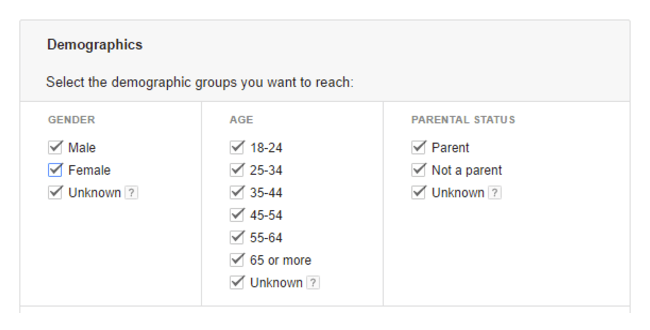
Facebook Demographic Targeting
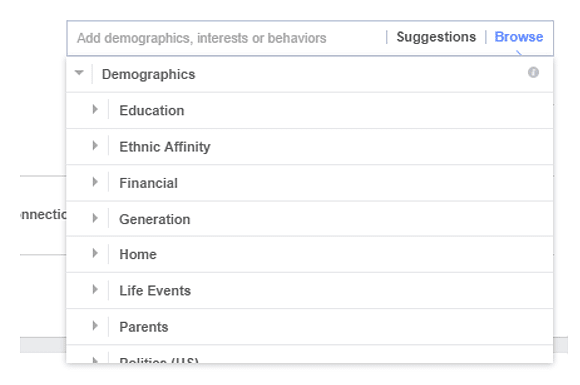
Behavioral-Based Targeting
Behavioral-based targeting is a bit more technical. As stated in the name, this type of targeting focuses on the behaviors of users browsing the Internet. One type of behavioral-based targeting is retargeting (also known as remarketing), the act of displaying ads to users that recently visited your website. An example would be a user browsing products on Walmart.com then being retargeted with ads displaying similar products while browsing other websites. Most consumers research a purchase on multiple websites so it is vital for brands to remain in front of that potential customer as they shop. Remember that pair of (unneeded) Nike shoes you were searching for that followed you around for weeks online until you finally caved and purchased them? Yeah, that's remarketing.
Google is a leader for behavioral-based targeting offering a mix of audiences including affinity, custom-affinity, in-market and remarketing/retargeting. Affinity and in-market audiences include users who are likely interested in a particular product, service or topic based off their recent search engine queries and web activity. Custom-affinity audiences are created by developing a persona of visitors to a website. Modeling after this group makes sense because many of these people are your current customers. An audience is then created of users with similar characteristics to the persona and then targeted with ads.
At Spinutech we utilize AdRoll, Google, Bing, Facebook, Yahoo Gemini and a few other platforms. Behavioral-based targeting is constantly improving as each platform improves its segmentation features. It is here to stay.
Google Affinity Audience Targeting
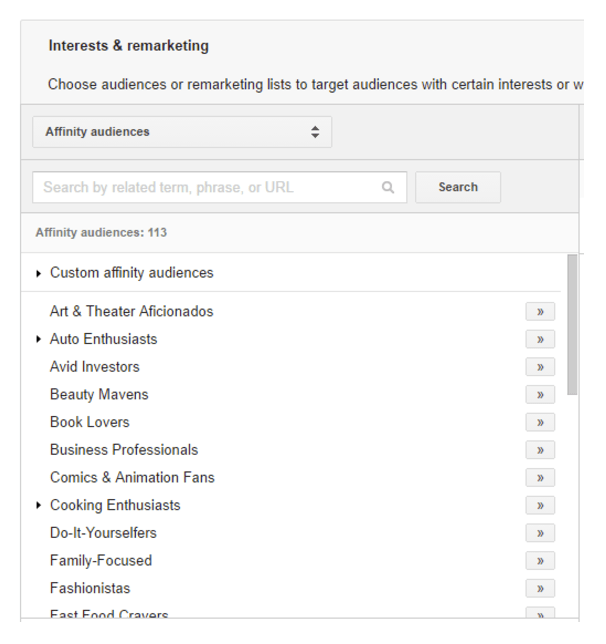
Google In-Market Audience Targeting
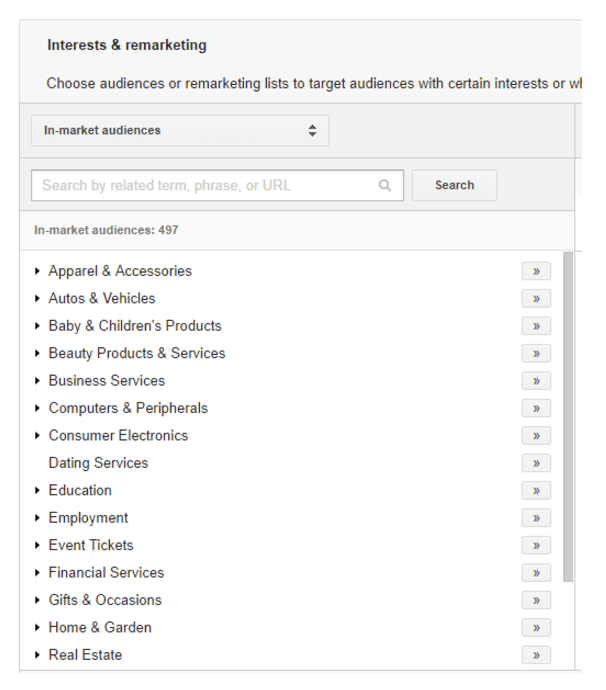
Contextual-based Targeting
Contextual-based targeting is geared towards displaying ads that correlate with the content on the page. An example would be a user on a recipe website being delivered advertisements from a local grocery store. The advertiser assumes that since this person is viewing recipes they are very likely to visit a grocery store for the ingredients. With Google, advertisers can select certain broad topics or utilize Placements to specify the actual websites where they want their ad to display. Contextual-based targeting casts a broad net so campaign performance must be monitored closely, but it can be effective and we have had success with many clients.
Google Topics Audience Targeting
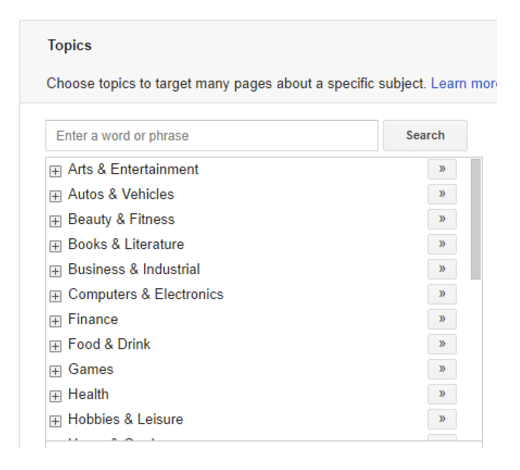
Sales-Based Targeting
Sales-based targeting could be bucketed with behavioral-based targeting and is a form of retargeting. With an e-commerce site it is straightforward, if a user purchases product A they are targeted with ads for products B, C and D. The assumption is made for example that if someone purchases a golf club they may also be interested in a bag, glove, balls or tees. Without e-commerce it gets more tricky. Facebook offers a few targeting options based off purchase history, like recent homebuyers. Custom lists are another option. These can be uploaded to most platforms allowing for a manual data import of recent purchasers. With this method an insurance company could upload a list of homeowner’s insurance policy purchasers and target them with ads about the benefits of bundling home and auto.
Put Targeting Into Action For Your Campaigns
This post was inspired by a recent article from Marketing Charts with a breakdown of targeting methods employed by agencies and brands. The article was specific to video ad campaigns although we see a similar breakdown with display advertising campaigns. We highly recommend testing a variety of targeting options but if your resources are limited start with demographic and behavioral-based followed by sales-based and contextual-based.
We’d love to have a discussion about the in-depth targeting capabilities for display and video advertising and how they could help your business. If you’d like to learn more, get in touch with us here!